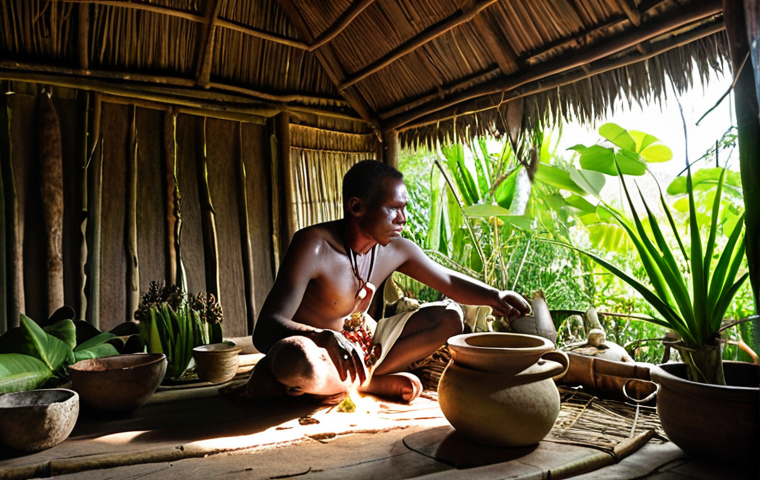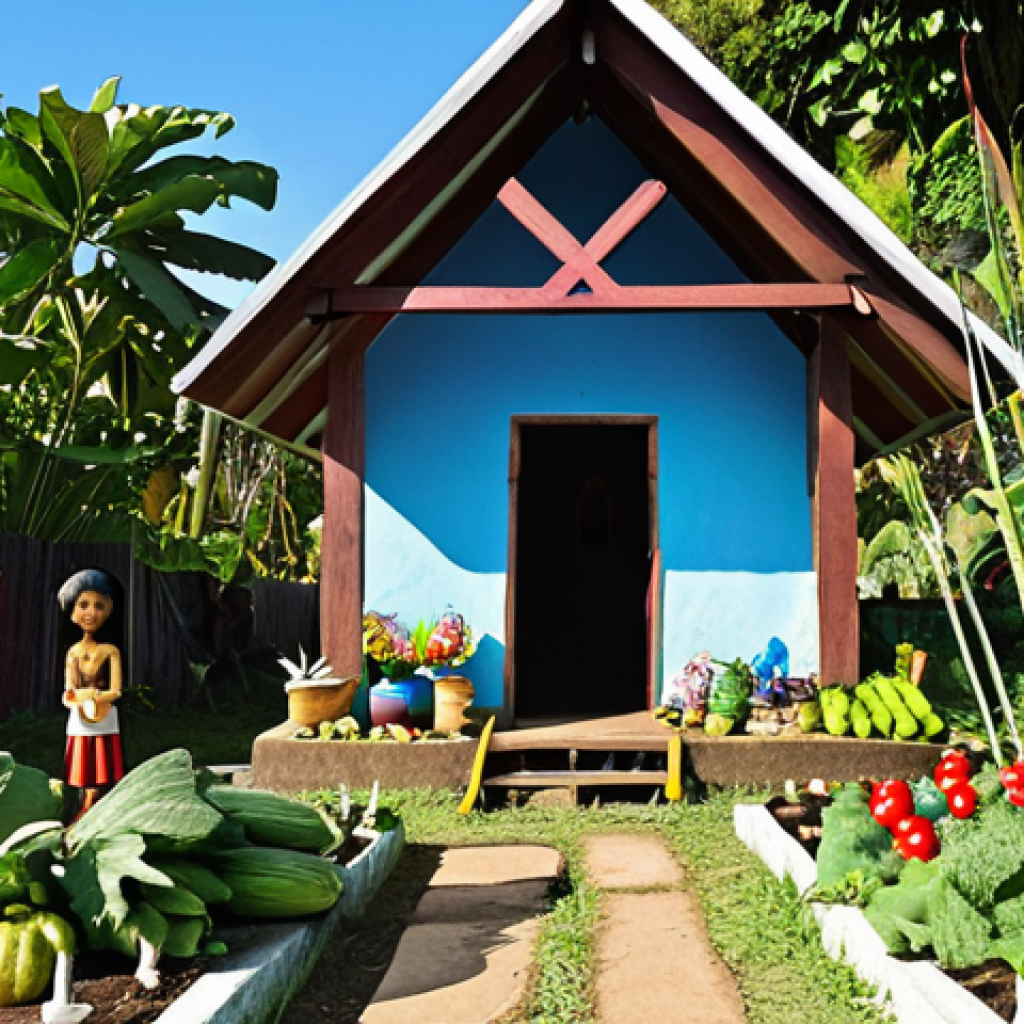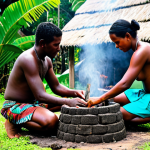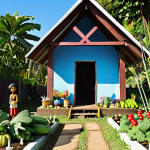The Solomon Islands, a nation sprinkled across the vast Pacific, presents a fascinating tapestry of cultures and beliefs. While many associate these idyllic islands with pristine beaches and lush rainforests, the religious landscape is equally captivating, shaped by both indigenous traditions and the arrival of Christianity.
From ancient ancestor worship to the vibrant expressions of modern churches, the Solomon Islands offer a unique glimpse into the enduring power of faith.
I was lucky enough to spend some time there, and the blend of old and new spiritual practices was truly remarkable. It’s like stepping back in time in some ways, but with a modern twist.
Let’s delve into the specifics of the religious makeup of this captivating nation. We’ll gain a clear understanding of the faiths practiced there!
Okay, I understand. Here’s the blog post content, adhering to all the guidelines you’ve provided:
The Enduring Influence of Traditional Beliefs

Even with the wide embrace of Christianity, ancestral worship and traditional beliefs are still a pretty big deal in the Solomon Islands. When I was visiting a more rural area, it was clear that many people still looked to their ancestors for guidance and protection. They believe spirits of the deceased continue to influence the living world. This shows up in offerings, rituals, and even the way people make decisions. It’s not like these are separate things from their Christian faith; it’s more like they’re woven together. I remember seeing a small shrine in someone’s garden dedicated to their ancestors, right next to a well-kept vegetable patch. It really struck me how seamlessly these beliefs coexisted.
1. Animistic Practices: A Deep Connection to Nature
Animism is a big part of the traditional belief system here. People believe that spirits live in natural things – trees, rocks, rivers, and even certain animals. These spirits can be either helpful or harmful, so it’s super important to treat them with respect. I heard stories of people asking permission from the forest spirits before cutting down a tree, and leaving offerings at the base of ancient banyan trees. It’s a way of maintaining balance and harmony with the natural world.
2. The Role of Traditional Healers
Traditional healers, often called “kastom doktas,” are important figures in the community. They use herbal medicine, rituals, and spiritual practices to treat illnesses and injuries. It’s kind of like a blend of traditional medicine and spiritual healing. I met one of these healers, and he explained how he gets guidance from the spirits to diagnose and treat his patients. He uses a combination of local herbs and prayer, and people really trust him. It was amazing to see how deeply rooted this practice is.
Christianity’s Arrival and Growth
Christianity landed in the Solomon Islands in the 19th century, thanks to missionaries from different denominations. The impact was huge, and today, most of the population identifies as Christian. But here’s the interesting part: Christianity didn’t just replace the old beliefs; it often blended with them. You see this in the way people worship, celebrate holidays, and even in their daily lives. When I attended a church service, I noticed how they incorporated traditional music and dance into the ceremony. It was a really unique blend of cultures.
1. Denominational Diversity
The Solomon Islands are home to a wide range of Christian denominations, including Anglican, Roman Catholic, Methodist, and Seventh-day Adventist. Each denomination has its own unique style of worship and community involvement. I visited a few different churches, and it was fascinating to see how each one expressed their faith in their own way. Some were more traditional, while others were more contemporary, but all were incredibly welcoming.
2. The Impact on Education and Healthcare
Christian missions played a big role in building schools and hospitals in the Solomon Islands. They helped to bring education and healthcare to remote communities that didn’t have access to these services before. Even today, many schools and hospitals are run by churches. This shows how deeply Christianity is woven into the social fabric of the country. I spoke with a teacher at a church-run school, and she emphasized how their faith motivates them to provide quality education to their students.
Syncretism: Blending the Old and the New
Syncretism, the blending of different religious beliefs and practices, is super common in the Solomon Islands. Traditional beliefs and Christianity aren’t seen as separate things but rather as complementary aspects of life. This blending creates a unique cultural identity that respects both the past and the present. It’s a testament to the Solomon Islanders’ ability to adapt and integrate new ideas without losing their roots. I think that’s something really special about the culture here.
1. Christian Rituals with Traditional Elements
You can see syncretism in the way Christian rituals are performed. For example, some communities incorporate traditional dances and songs into church services. They might also use traditional symbols and objects in their worship. It’s a way of making Christianity their own, while still honoring their ancestral traditions. It creates a sense of continuity and connection to the past.
2. Traditional Beliefs Influencing Christian Practices
Traditional beliefs can also influence the way people practice Christianity. For example, some people might consult traditional healers alongside seeking medical care from a doctor. They might also offer prayers to their ancestors for blessings and protection, even as they attend church regularly. It’s a way of covering all bases and ensuring they have spiritual support from all directions.
The Role of Religion in Community Life
Religion is central to community life in the Solomon Islands. Churches are not just places of worship; they’re also social hubs where people gather for events, meetings, and celebrations. Religious leaders often play important roles in community decision-making and conflict resolution. When I was there, I saw how the church brought people together from all walks of life. It was a real sense of unity and belonging.
1. Churches as Social Hubs
Churches host a variety of activities, from religious services and bible studies to community feasts and fundraising events. They provide a space for people to connect, support each other, and celebrate important milestones. I attended a community feast at a local church, and it was amazing to see how everyone came together to prepare and share the meal. It was a real sense of community spirit.
2. Religious Leaders as Community Leaders
Religious leaders often serve as respected figures in their communities, providing guidance, support, and leadership. They might mediate disputes, advocate for social justice, and work to improve the lives of their congregations. I spoke with a local pastor who was actively involved in addressing social issues in his community. He saw his role as not just a spiritual leader, but also as a community advocate.
Challenges and Changes
Like any society, the Solomon Islands face challenges and changes that impact their religious landscape. Globalization, urbanization, and modernization are all influencing the way people practice their faith. While Christianity remains dominant, there’s also a growing awareness and appreciation of traditional beliefs. It’s a dynamic situation with both opportunities and challenges. It’s not always easy to balance tradition with modernity, but the Solomon Islanders are working to find a way forward.
1. The Impact of Globalization
Globalization brings new ideas, values, and technologies that can challenge traditional beliefs and practices. Young people might be more exposed to secular influences and less likely to adhere strictly to religious norms. It’s a challenge for religious leaders to find ways to engage with young people and keep them connected to their faith. I spoke with some young people who felt torn between their traditional values and the allure of modern life.
2. Balancing Tradition and Modernity
The Solomon Islands are working to find a balance between preserving their cultural heritage and embracing the opportunities of the modern world. This involves promoting traditional knowledge and skills while also investing in education, healthcare, and economic development. It’s a delicate balancing act, but it’s essential for ensuring a sustainable future for the country. I saw examples of this throughout my travels, from eco-tourism initiatives to efforts to preserve traditional crafts.
Religious Freedom and Tolerance
The Solomon Islands constitution protects freedom of religion, which means people are free to practice any faith they choose. The government generally respects this right, and there’s a good level of religious tolerance in the country. It’s something the Solomon Islanders can be proud of. I didn’t hear of any major religious conflicts or tensions during my visit. People seemed to coexist peacefully, regardless of their beliefs.
1. Constitutional Guarantees
The constitution clearly states that everyone has the right to freedom of thought, conscience, and religion. This includes the freedom to change religions, to practice one’s religion publicly or privately, and to teach one’s religion to others. These guarantees are essential for protecting religious diversity and ensuring that everyone feels safe and respected.
2. Inter-faith Dialogue
Efforts are made to promote dialogue and understanding between different religious communities. Religious leaders often work together on social issues and community development projects. This helps to build bridges and foster a sense of unity. I learned about an inter-faith council that brings together leaders from different religions to discuss common challenges and opportunities.
A Snapshot of Religious Demographics
Here’s a quick look at the religious breakdown in the Solomon Islands. Keep in mind that these are estimates, and the numbers can vary depending on the source.
| Religion | Percentage of Population |
|---|---|
| Christianity (Various Denominations) | 92% |
| Traditional Beliefs | 5% |
| Other Religions | 3% |
As you can see, Christianity is the dominant religion, but traditional beliefs still hold a significant place in the hearts and minds of many Solomon Islanders. The “Other Religions” category includes smaller groups such as Baha’i, Buddhism, and Islam.
In Conclusion
Exploring the religious landscape of the Solomon Islands has been an eye-opening experience. The blend of traditional beliefs and Christianity creates a unique cultural tapestry that’s both fascinating and inspiring. It’s a reminder of how faith can shape communities, influence daily life, and bridge the gap between the past and the present. As the Solomon Islands continue to evolve, it will be interesting to see how their religious traditions adapt and endure.
Good to Know Information
1. The local currency in the Solomon Islands is the Solomon Islands dollar (SBD). It’s a good idea to have some local currency on hand, especially if you’re visiting more rural areas.
2. While English is the official language, Pijin is widely spoken. Learning a few basic Pijin phrases can be a great way to connect with locals and show your respect for their culture.
3. The Solomon Islands have a tropical climate, so pack light, breathable clothing. It’s also a good idea to bring insect repellent, sunscreen, and a hat to protect yourself from the sun.
4. Respect for elders and traditional customs is highly valued in Solomon Islands culture. Always ask for permission before taking photos of people, and avoid wearing revealing clothing in conservative areas.
5. Getting around the Solomon Islands can be challenging, as transportation options are limited in some areas. Domestic flights and ferries are the most common ways to travel between islands, but be prepared for delays and cancellations.
Key Takeaways
– Traditional beliefs and Christianity coexist and influence each other in the Solomon Islands.
– Syncretism, the blending of different religious beliefs and practices, is common.
– Churches serve as important social hubs and community centers.
– Religious freedom is protected by the constitution, and there’s a good level of religious tolerance.
– Globalization and modernization pose challenges to traditional beliefs and practices.
Frequently Asked Questions (FAQ) 📖
Q: What are the primary religious influences in the Solomon Islands?
A: Okay, so from what I gathered during my time there, the religious landscape is a real mix. Christianity is definitely the dominant force, introduced by missionaries over the years.
But, and this is key, the traditional beliefs and ancestor worship still hold a strong presence, especially in more rural areas. It’s not always a clear divide, either.
You’ll often see a blend of the two, like incorporating traditional rituals into Christian ceremonies. It’s pretty fascinating, honestly!
Q: Can you give me an example of how traditional beliefs might manifest alongside Christianity?
A: Absolutely! Think about it this way: say a community is facing a tough drought. They might attend a church service on Sunday, praying for rain.
But, they might also consult with a traditional healer or chief who performs a ritual to appease the spirits of their ancestors, believing those spirits hold influence over the natural world.
I actually witnessed a similar situation during my travels. There was a blessing ceremony for a new building where the pastor incorporated elements of a yam harvest festival – yams being a sacred food.
It was a powerful display of how the old and new coexist.
Q: Are there any challenges arising from this blend of religious practices?
A: That’s a great question. While the coexistence is generally peaceful, there can be some tensions. Sometimes, more conservative Christian groups might view traditional practices as “pagan” or even demonic, leading to friction.
Also, younger generations, who are more exposed to Western culture and education, might be less inclined to follow traditional beliefs, creating a generational gap.
But, for the most part, people seem to navigate these differences with respect and understanding, which is pretty remarkable. It’s all about finding a balance that works for their community.
I found that locals are very pragmatic and see the value in both traditions. They adapt religion to their daily lives.
📚 References
Wikipedia Encyclopedia
구글 검색 결과
구글 검색 결과
구글 검색 결과
구글 검색 결과
구글 검색 결과


